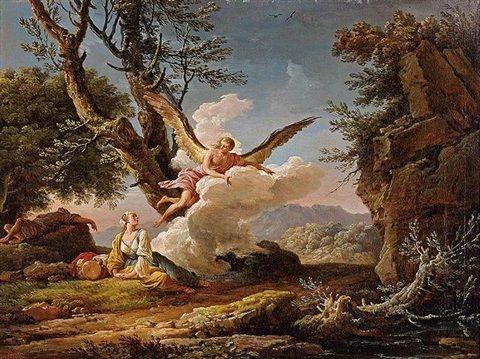Description
The painting "The Banishment of Hagar and Ishmael" by Claude Joseph Vernet is a masterpiece of French Baroque art that represents a biblical scene from the book of Genesis. The composition of the painting is impressive, with an abundance of detail and careful attention to light and shadow.
Vernet's artistic style is characterized by his ability to create realistic and detailed landscapes, and this painting is no exception. The scene takes place in a desert landscape, with mountains and rocks stretching to the horizon. The figure of Hagar, the mother of Ishmael, is in the foreground, while her son is seated at her feet.
Color is another prominent aspect of this painting. Vernet uses a palette of warm, earthy colors to represent the landscape, creating a feeling of warmth and tranquility. The skin tones of the characters are also very realistic, giving them a human and natural appearance.
The story behind the painting is also very interesting. The scene represents the moment when Hagar and Ishmael are banished by Abraham, Ishmael's father, after his wife Sarah gives birth to their own son, Isaac. The painting is a reflection on the relationship between faith and family, and on how the decisions we make can have lasting consequences.
There are some lesser known aspects of this painting that are also fascinating. For example, it is believed that Vernet used real models to create the characters in the painting, giving it greater authenticity and realism. Furthermore, the painting was commissioned by a French nobleman, demonstrating the importance placed on art in the Baroque era.

